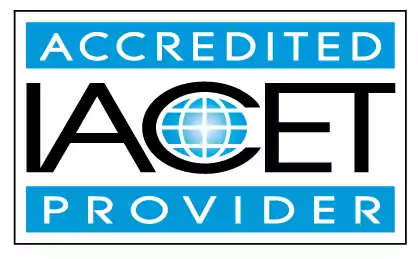Define and provide examples of structured activity and set standards for time spent per day
Central Objective: Define and provide examples of structured activities and establish clear daily time standards for how much time is spent on these activities in early childhood education and child care centers. Supporting Elements: Define unstructured activity and set explicit daily time standards for free play and other unstructured moments.Trainings incorporating this outcome
CDA Subject Areas
Proficiency Level
Topic Areas
Price
States
Alabama (1) Alaska (1) Alberta (1) Arizona (1) Australia (1) British Columbia (1) California (1) Colorado (1) Connecticut (1) Delaware (1) District of Columbia (1) Florida (1) Georgia (1) Hawaii (1) Idaho (1) Indiana (1) Iowa (1) Jamaica (1) Kansas (1) Louisiana (1) Maine (1) Manitoba (1) Maryland (1) Massachusetts (1) Michigan (1) Minnesota (1) Mississippi (1) Montana (1) Nebraska (1) Nevada (1) New Hampshire (1) New Jersey (1) New Mexico (1) New York (1) Newfoundland and Labrador (1) North Dakota (1) Ohio (1) Oklahoma (1) Ontario (1) Oregon (1) Pennsylvania (1) Puerto Rico (1) Rhode Island (1) Saskatchewan (1) South Dakota (1) Texas (1) Thailand (1) United Kingdom (1) Utah (1) Vermont (1) Virgin Islands (1) Virginia (1) Washington (1) West Virginia (1) Wisconsin (1) Wyoming (1)
2 hours courses
Related Outcomes
- Define unstructured activity and provide set standards for time spent per day.
- Define sedentary activities, including screen time, and their impact and identify time limits per day
- Give examples of appropriate sensory activities for infants and toddlers.
- Define active play in the early childhood classroom and describe its benefits for young children.
- Demonstrate understanding of strategies that utilize good time management practices for teachers and child care providers.
- Give examples of appropriate sensory activities for preschool-age children.
- Identify examples of appropriate activities for different ages.
- Give examples of developmentally appropriate musical activities for children.
- Recognize the importance of demonstrating respect for all diversity and providing activities that reflect a welcoming environment for all children, youth and families, regardless of culture, language, or religion, or strengths, talents, and abilities.
- Identify appropriate practices for identify and demonstrate an children: Identify examples of appropriate activities for different ages
- Give examples of activities considered appropriate for mixed-age groups.
- Give examples of time management strategies administrators can use to balance record keeping and supervising.
- Define what it means to be a coach in the early childhood education setting.
- Give examples of activities to focus on play, exploration, and constructive approaches to learning math
Related Articles
- Physical Activity Guidelines
- Cross-Cultural Toilet Training Practices
- Child care education
- Child Care Professionals
- How to Start a Daycare
- Managing Behaviors in the Early Childhood Education Classroom
- Balancing Routine and Flexibility: Creating a Structured Yet Adaptable Schedule for Children
- The“Puzzle Pieces” of Sleep Stages in Children and How they Fit Together
- How Screens Turn Your Child’s Brain into a Battleground of Bliss and Boredom
- Laugh, Learn, and Lift Spirits: Stress-Busting Tips for Early Childhood Educators
- From Chaos to Calm: New Year Hacks to Streamline Routines in Early Childhood Classrooms
- Cracking the Code of Children's Sleep (And Your Sanity)
- Child Care Licensing in Texas: What You Need to Know to Stay Compliant
- Child Care Licensing in Texas: Requirements, Updates, and Compliance Tips
- Starting an In-Home Daycare? The Ultimate Checklist.
- DAP Delight: Making Learning Joyful & Just Right for Every Child
- Why Do Children Need So Much Repetition?
- 👧 How to Start and Open a Daycare in Texas? What You Need to Know
 0.2 CEUs
0.2 CEUs